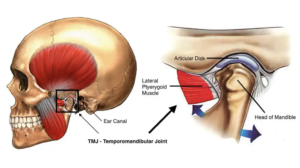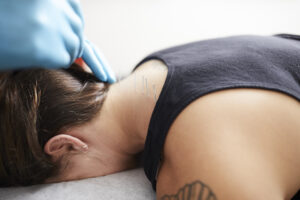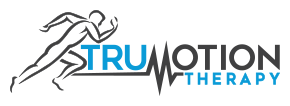September 12th, 2023
TMJ stands for temporomandibular joint and is the joint formed between the temporal and mandibular bones.  When someone has pain or dysfunction of the TMJ we call it temporomandibular dysfunction (TMD).  The pain experienced with TMD can have a couple different sources.
Joint source of jaw pain
In some cases of TMD the main problem is with the joint.  The TMJ contains a disc which allows for proper movement and reduced friction within the joint.  If the disc becomes displaced there may be significant clicking or clunking in the jaw.  People with a disc displacement will feel like they have a hard stop when trying to open their mount. Fortunately, not all joint related issues will involve displacement of the disc.

Muscle source of jaw pain
The muscular system around the jaw is an incredible work of engineering.  The functionality is very delicate, and if some of those muscle become overly tense it can create pain and limit the function of the jaw. When a muscle is overly tight it can cause local and referred pain. Common areas for pain referral for tight jaw muscles are the ear and head.
Joint and muscle sources of TMD are typically the result of clenching or grinding the teeth.  People frequently deny they do this, but studies have found people are notoriously bad at determining whether or not they clench or grind.  Emotional and postural stresses can cause excessive tension in the jaw leading to clenching and grinding while sleeping or during the day without us even realizing.
Does dental occlusion matter?
Poor occlusion is often blamed for causing TMD.¬† Occlusion is the way the teeth fit together when the jaw is completely closed.¬† While occlusion can matter in some cases, the majority of TMD cases can be successfully treated without altering occlusion.¬† In fact, the dentist who literally wrote the book on TMD and orofacial pain has said ‚Äúthe clinician who looks only at occlusion is missing as much as the clinician who never looks at occlusion.‚Ä̬†¬† Furthermore, a study published in concluded ‚Äúlittle scientific evidence supports¬† a direct cause and effect relationship between poor occlusion of the teeth and TMD.‚ÄĚ
Treatments for TMJ syndrome
Fortunately, TMD can be managed successfully without invasive procedures.¬† From an article published in the journal Spine, ‚Äú80% of TMD not precipitated by injury will resolve with conservative treatment.‚ÄĚ
Trained chiropractors can successfully treat jaw pain with a variety of techniques.  For those where the joint is the source of the pain focus will be on performing specific movements of the jaw to reposition the disc.  For more stubborn cases a trained physician can gently manipulate the jaw to assist in repositioning the disc.
If muscle tension is your problem, the focus will be on reducing tension in the problematic muscles.  This can be done with targeted massage or dry needling.  Dry needling involves inserting thin acupuncture needles into tight muscles to force the muscles to relax.

Whether the issue is joint or muscle tension it‚Äôs important to unlearn the habit of clenching or grinding.¬† This can be done by practicing the ‚Äújaw relief position.‚Ä̬† This is the position the jaw should be in anytime you are not talking, eating, or drinking.
-
Teeth slightly apart
-
Lips lightly together
-
Tongue resting on the top of your mouth like you’re about to click for tongue
It has been found that 60% of those who primarily clench at night can de-train this habit by practicing the jaw relief position during the day.
There are other conditions that can contribute or coincide with TMD symptoms including neck pain, headaches, and ear pain.  In fact, in some cases face or jaw pain will be caused entirely by dysfunction in the neck.  If you have jaw pain it is important for your doctor to look locally at your jaw, but it is equally important for them to look globally.
Botox injections are a common treatment for TMD, and can be beneficial for relaxing tight muscles when more conservative options fail. Since the effects of botox wear off over time, it is still important to see a chiropractor for soft tissue and joint treatments.
Dental appliances are also commonly used to help improve issues with occlusion to take pressure off the TMJ. These appliances are usually made of plastic and are custom fitted by a dentist to attach to the top row of teeth.
Jaw surgery should be the absolute last resort in the treatment of TMD. Fortunately, the numbers are in our favor. Most people with TMD respond very well to conservative treatments.
If you are experiencing jaw pain, we would be happy to help. We can work closely with your dentist to ensure you are receiving the best care possible. If you do not have a dentist, we can refer you to one that we know and trust. CLICK HERE to schedule an appointment.





